

In order to better understand where these French trade axes were manufactured, I began contacting many French and Basque museums as well as organizations. After many replies and dead end trails, I was given the contact information of Daniel Boucard, author of the book "Les haches". Daniel Boucard is a well know expert in french antique axes and adzes. I sent him a letter last december with a copy of every armorer's mark found on so called French trade axes that are compiled on my web site along with some background information on the north american trade axe found on many of our 17th and 18th archeological sites.
Here was part of his reply:
Dear Sir,
I am stunned by your questions because I cannot really answer them in order to help you in your research. The shapes of your French Trade Axe are a synthesis of the shapes of French hatchets, i.e., "Passse Partout" and without characteristic and regional personality. Thus difficult to undoubtedly know the area where they originated or were manufactured (They are neither Breton, neither Normand, nor Basque). The marks, stamps and punches are typical of the 17th or 18th century, before the "taillandiers" (blacksmiths) mixed in their monogramme or complete marks. The shape of these punches: circle separated in several parts is one of the marks most used in the world. It is a universal symbol and in addition to the old ones on old French tools, we tend to find them on more recent on tools or axes of Turkish, Indian (Asian) Indonesian origin.
At this point, the only I can do is to provide you with sketches of the principal marks and punches resembling the ones you have provided me, which are found on my axes and adzes as well as to indicate the provenance if known...Receive Sir, my best greetings.
Daniel Boucard.

 |
Sur une asse de tonnelier
(adze) France (19th century) |
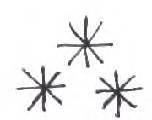 |
Asse à
rogner (adze) Languedoc region, France (19th century) |
 |
Sur une
double herminette à creuser (adze) Languedoc region, France (19th century) |
 |
Sur un
prochon Germany (18th century) |
 |
Sur une
hachette (hachet) France-compté region, France (19th century) |
 |
Sur une
petite doloué de charpentier de marivé (carpenter tool) Holland (19th century) |
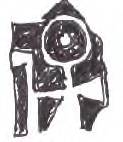 |
Sur une
épaule de mouton (adze) Alsace or Germany (18th or 19th century) |
 |
Sur une
asse de rognage de tonnelier (adze) South of France, (19th century) |
 |
Sur une
asse de rabattage (adze) France (19th century) |
 |
Sur une
herminette à gouge (adze) Switzerland, (18th or 19th century) |
 |
Sur une
hachette à blanchir (hachet) Hungary (19th century) |
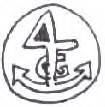 |
Sur une
hachette à blanchir (hachet) Hungary (19th century) |
 |
Sur une
épaule de mouton Hungary (18th or 19th century) |
 |
Sur une
hachette (hachet) Bresse, France (19th century) |
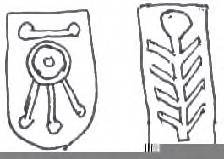 |
Sur une
hache de charpentier (Found on a carpenter's axe) Austria? (18th or 19th century) |
 |
Sur une
demi-épaule de mouton
Austria-Hungary (18th or 19th century) |
 |
Sur une
hache de bûcheron (axe) Île de France, France (19th century) |
 |
Sur une
"épaule de mouton" Switzerland (18th or 19th century) |
 |
Sur une
hache de sabotier (axe used to make wooden shoes) North region of France (19th century) |
 |
Sur une
doloire de tonnelier (a form of adze) France ? (17th century) |
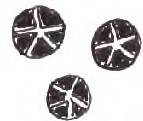 |
On a modern Turquish axe (1980) |
 |
Sur un
coutre Limousin, France (18th century) |
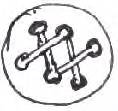 |
Sur une
hache de charpentier (carpenter's axe) France (18th century) |
 |
Sur une
hache à mortaiser (mortise axe) (Bandhake) Austria (19th century) |
 |
Sur une
herminette de charpentier (carpenter's adze) Bourgogne, France (18th century) |
 |
Sur une
herminette de charpentier (carpenter's adze) Bourgogne, France (18th century) |
 |
Sur un
déondoir de vigneron South Bourgogne (18th century) |
 |
Sur un
marteau-taillant de tailleur de pierre (stone mason's hammer) France (19th century) |
 |
Sur une
hachette à blanchir (hachet) Austria (19th century) |
 |
Sur un
coupe-marc Haute Normandie (19th century) |
 |
Sur une
hache de chare (axe) Bourgogne, France (17th or 18th century) |
 |
Sur un
hachoir Auvergne, France (19th century) |
 |
Sur un
hachoir Auvergne, France (19th century) |
 |
Sur une
herminette à étrier (adze) Languedoc, France (18th or 19th century) |
 |
Sur une
asse à rogner (adze) Auvergne, France (19th century) |
 |
Sur une
herminette de sabotier (adze) Auvergne, France (19th century) |